New, serious problem for the global geopolitics is looming. In the Far East, struggle for supremacy between US and China has intensified. There is a sense in Beijing that America is surrounding the country from the sea.
The indications of the great struggle
The "Arab Spring" is seriously affecting the global geopolitical picture. Presently, great attention is riveted to the Near and the Middle East. However, it would be false to assume that those events may overshadow the geopolitical processes evolving in the Far East. It is there, that world superpowers are flexing their muscles for ultimate supremacy.
According to some reports in the U.S. media, the country has deployed nearly 70-80% of its navy fleet into the Pacific. Washington is dispatching its most advanced vessels into that region. Initially one may conclude that there are no viable reasons for such an act, due to absence of a country waging a war in that location. However, some aspects emerge while taking a broader look into the situation.
Slowing down China’s rapid development pace is something that Western politicians contemplate upon. It’s likely that in several years time, China will become a country to generate enough strength to compete with US on the global scale.
According to some forecasts, Beijing may even turn into a global leader. Chinese leaders deny the fact, modestly placing themselves into the "developing countries" classification, although real figures illustrate different picture.
Certain analysts believe that US stands little chance of emerging victorious from this rivalry. Therefore, United States of America has initiated a systematic geopolitical course to prevent defeat.
Renowned political scientists of the West such as, H.Kissinger and Z.Brzezinski conclude that US-China rivalry will be the top matter of the global geopolitical picture of the future. It’s arduous to unequivocally predict a lucky party in this process, since incidental contribution may drastically shift the relation of forces.
Geopolitical and economic processes progressing in Asia-Pacific underpin these conclusions. In the meantime there seems to be a growing geopolitical risk for America.
"Island" conflicts in the Far East
Overview of international media’s analysis of the events in the Far East shows several emerging conflict epicenters that can be divided into two groups. The first are regional countries’ reciprocal territorial claims over the islands. Interestingly, China seems to be a contesting party in every dispute.
China shares a problem with Vietnam, Indonesia, the Philippines and Brunei over Paracel Islands, a three island archipelago laying in the South China Sea.
China just appeared to have an "island" issue with Japan. Japan has announced ownership of the purchased Senkaku Islands (China refers to them as Diaoyutai Islands) and China confronted vigorously official Tokyo’s claim, by deploying military vessels into the area. Tensions between China and Japan are still heightened over the dispute.
How is the U.S. connected with all of this? According to publications in Chinese "Global Times" and "Jenmin Jebao" newspapers, America bears a direct relation to the matters. Article in the August the 6th edition of the Chinese "Global Times" reads: "USA has to realize the difference between the South China Sea and the Mediterranean." meaning not to confuse Far East with the Middle East. "Jenmin Jibao" used harsher language saying: "We can shout at the US: shut up!" Such reactions from China are not groundless.
The issue is that there are certain parallels between significant military aid to Chinese rivals in the region and the enkindling of "island problems". U.S. navy vessels have suddenly emerged in Cam Rahn in Vietnam. Americans have also conducted military exercises along with Vietnam and the Philippines, while announcing close assistance to modernization of the latter’s military. Those events coincide with this April’s heightened disputes over the islands. Washington unequivocally supports Tokyo in the islands dispute between China and Japan. In the meantime U.S. increases military aid to the "Land of the Rising Sun".
Thus, in light of the "islands problem", the U.S. is steadily building military pressure along with China’s borders, by deploying military vessels to country’s immediate sea frontiers and by providing new military equipment to Japan and South Korea. Air defense capabilities are being enhanced in the Asia-Pacific. New military base for marines in Australia and another air force base elsewhere in the region are being set up.
Energy and raw materials: new strike dimension
Second confrontation is related to U.S actions against China in the area of energy and raw materials. Military presence of the U.S. is a serious impediment to the Chinese investment in Afghanistan, thus China is prevented from getting dry land access to Pakistan and Iran, a precondition for efficient cooperation in the energy and raw materials field.
U.S. utilizes every option to obstruct Chinese access to oil and gas reserves of the Central Asia. Threat of enkindling of conflicts on these grounds has increased in the region. The level of China’s energy cooperation with Turkmenistan, Kyrgyzstan, and Kazakhstan may have been much higher.
Presently, Washington is stepping up efforts to "block" African "route" for China. China was the topic of serious discussions during Hillary Clinton’s visit to the "black continent" this August. In 2011, trade turnover between China and African states has reached 166 billion US dollars; in exchange the U.S. has offered loans and military aid to the countries of the continent. In the meantime U.S. is exerting increasing pressure upon the ASEAN countries. Chinese trade with these countries has totaled to 363 billion US dollars. Certain countries of ASEAN had already chosen Washington in the U.S.-China stand off. China’s biggest rival in the region, India’s favorable choice of cooperation with the U.S also troubles Beijing. Analysts predict strengthening of the trend.
China’s "lonely pride" and the new realities
Chinese analysts in turn, are not at all optimistic about all this. According to Lee Szen of the Chinese naval military research institute, the U.S. is in the position to block maritime routes that are vital for China. That is a major reason for U.S. attempts to surround the country from the sea.
On the other hand, China’s allies on dry land are next to none. There are abundant examples that ascertain the nature of Beijing’s relations with its neighbors during the past 2 years. And it’s certainly a naivety to presume that "Great Wall" could serve as a solid defense against the advanced technical capabilities of the XXI century. Thus, Chinese leadership increasingly senses the pressure from the rivalry with the United States.
The unfolding of the situation in such a fashion in the Far East has serious global implications. Russian factor is also needs to be taken into account. Moscow’s most recent significant activity in the Far East direction mustn’t be neglected. Undoubtedly, when necessary, Russia will try to affect the U.S.-China rivalry. "Warming up of waters" in the Pacific can certainly push the "geopolitical temperature" up in the Central Asia. Events are entering into more perilous phase and there are noticeable disputes between the states in the region.

In some countries like Uzbekistan, Tajikistan and Kyrgyzstan social-political tensions are increasing. There are growing protests in Fargana (Uzbekistan), constant provocations against government officials in Pamir (Tajikistan) and renewed discontent on ethnic grounds in Osh (Kyrgyzstan).


Consequently, U.S.-China confrontation would breed tension in the vast geopolitical region, with no guarantees for curbing the trend. Thus, analysts do not exclude the possibility of emergence of the new standoff on the global stage.

Xəbər lenti
Türkiyə XİN 20 Yanvar faciəsinin qurbanlarını yad edib
Siyasət 10:1620 Yanvar faciəsinin ildönümü anılır - FOTOLAR
Siyasət 09:48Baş nazir və spiker Şəhidlər xiyabanını ziyarət ediblər
Siyasət 09:05Tramp və Əl Şaraa arasında telefon danışığı olub
Dünya 04:03"Beşiktaş" son dəqiqə qolu ilə sevindi
İdman 02:13Tramp Putini də Sülh Şurasına dəvət etdi...
Siyasət 01:14Gürcüstanda 159 məhbus əfv edildi
Dünya 00:42Azərbaycanda mənzil bazarında qiymətlər bahalaşıb
İqtisadiyyat 00:24Aleks de Souza bu klubdan ayrıldı
İdman 19 Yanvar 23:28Birinci vitse-prezident Mehriban Əliyeva 20 Yanvar faciəsinin ildönümü ilə bağlı paylaşım edib
Siyasət 19 Yanvar 23:25Suraxanıda 9 kiloqramdan artıq narkotik vasitə aşkarlanıb - DİN
Hadisə 19 Yanvar 23:12Çindən ilk Transxəzər yük qatarı Bakıya yola düşüb
İqtisadiyyat 19 Yanvar 23:04İranda internet həftəsonuna qədər bərpa olunacaq - Pezeşkianın müavini
Dünya 19 Yanvar 22:35İspaniyada üçgünlük matəm elan edildi
Dünya 19 Yanvar 22:21Rusiya Xarkovu bombaladı - ölü və yaralılar var
Dünya 19 Yanvar 22:12Leyla Əliyeva Efiopiyanın Baş naziri ilə görüşüb
Siyasət 19 Yanvar 22:01Heyvan çapları 2026-cı ilin yazında dəbə qayıdacaq...
Dəb 19 Yanvar 21:54Ən əfsanəvi Ferrari hərracda 38,5 milyon dollara satıldı…
Texnologiya 19 Yanvar 21:45AMADA-da 20 Yanvar faciəsinin 36-cı ildönümü anılıb
Sosial 19 Yanvar 21:38Taylandda əskinası tapdalamaq sizi həbsxanaya apara bilər...
Maraqlı 19 Yanvar 21:23Netflix filmlərdə süjeti dialoq şəklində təkrarlamasını istəyir, özü də...
Mədəniyyət 19 Yanvar 21:16Fransa Trampın "Sülh şurası"nda iştirak etməkdən imtina edir...
Dünya 19 Yanvar 21:04Ceyhun Bayramov ilə Marko Rubio arasında telefon danışığı aparılıb...
Siyasət 19 Yanvar 20:58Rus deputat ümumi qanuni nikahı “sədaqətli zina” adlandırıb...
Maraqlı 19 Yanvar 20:54Avropa ABŞ-a “diş göstərməsinin” vaxtı gəlib, “yeyilməsin” deyə..?
Dünya 19 Yanvar 20:45İsraildə 20 Yanvar şəhidləri anılıb
Sosial 19 Yanvar 20:43Cəlilabadda piyadanın ölümü ilə nəticələnən yol qəzası baş verib
Hadisə 19 Yanvar 20:33Tramp Qrenlandiyanın güc yolu ilə ələ keçirilməsi ilə bağlı suala cavab verdi...
Dünya 19 Yanvar 20:24Prezident İlham Əliyevin Tedros Adhanom Qebreyesus ilə görüşü olub...
Siyasət 19 Yanvar 20:20Müdafiə yolu ilə qələbə əldə edilə bilməz...
Dünya 19 Yanvar 20:17İlham Əliyev Morten Dirholm ilə görüşüb...
Siyasət 19 Yanvar 20:16Pitonlarla mübarizə aparmaq üçün robot dovşanlar yaradılıb...
Dünya 19 Yanvar 20:05Köhnə təyyarələr Rusiya aviaşirkətləri üçün yenidən işə salınacaq...
Dünya 19 Yanvar 19:53RSXM-də 20 Yanvar faciəsinin 36-cı ildönümünə həsr olunmuş tədbir...
Sosial 19 Yanvar 19:43UNO-ları ən çox araşdıran ölkələr açıqlanıb...
Texnologiya 19 Yanvar 19:37Dünya milyarderlərinin ümumi sərvəti rekord həddə çatıb…
Dünya 19 Yanvar 19:23Salyanda yol qəzası olub, ölən və yaralanan var
Hadisə 19 Yanvar 19:17Bəzi insanların niyə 110 ildən çox yaşamasının səbəbi izah edilib…
Maraqlı 19 Yanvar 19:05İslamda musiqi ilə bağlı fikir ayrılıqlarının səbəbi nədir və...
Dünya 19 Yanvar 18:45Yüksək nüfuzun dəyərli mükafatı - TƏHLİL
Siyasət 19 Yanvar 18:30Alimlər Günəşin "gizli həyatını" ilk dəfə müşahidə ediblər...
Dünya 19 Yanvar 18:26“Artıq minlərlə ailə Qarabağ və Şərqi-Zəngəzura köçürülüb“ -DEPUTAT DANIŞDI
Siyasət 19 Yanvar 18:14Airbus Çin humanoid robotlarını sınaqdan keçirir...
Texnologiya 19 Yanvar 18:05Silahı susduran liderlik - ANALİZ
Siyasət 19 Yanvar 17:58“İnfarkt niyə yaşa baxmır?”
Sosial 19 Yanvar 17:3520 Yanvar 1990-cı il - Azərbaycan tarixində qanla yazılan qəhrəmanlıq səhifəsi - MƏQALƏ
Siyasət 19 Yanvar 17:34UNEC Dünya İqtisadi Forumunun “Qlobal Risklər Hesabatı 2026”nın rəsmi tərəfdaşı seçilib
Təhsil 19 Yanvar 17:32Türküstanda İslam İnstitutu açılıb...
Dünya 19 Yanvar 17:25"Mina xəritələri olmadan sülh mümkün deyil" - ŞƏRH
Siyasət 19 Yanvar 17:18TƏBİB rəhbərliyi Şəhidlər xiyabanını ziyarət edib
Siyasət 19 Yanvar 17:16Müdafiə Nazirliyi və Dövlət Komitəsi birgə tədbirlər planı imzalayıb
Siyasət 19 Yanvar 17:15DSX-də 20 Yanvar faciəsinin ildönümü ilə əlaqədar anım tədbirləri keçirilib
Siyasət 19 Yanvar 17:14Bakıda 10 müntəzəm marşrutun hərəkəti alternativ küçələrlə təşkil ediləcək
Sosial 19 Yanvar 17:13Bakı metrosunda "Qarabağ"ın oyunu ilə əlaqədar iş saatı uzadılacaq
Sosial 19 Yanvar 17:11Səfərbərlik Xidmətinin rəhbərliyi Şəhidlər xiyabanını ziyarət edib
Siyasət 19 Yanvar 17:10“Konfrans Hindistanın etnik siyasətinə regional baxış imkanı yaratdı” - POLİTOLOQ
Siyasət 19 Yanvar 16:43Qlobal idarəetmə, iqtisadi inteqrasiya - ANALİTİK
Siyasət 19 Yanvar 16:35Qorbaçovun QARA ÜZÜ
Siyasət 19 Yanvar 16:34“20 Yanvar xalqımızın azadlıq iradəsinin dönüş nöqtəsi oldu” - SORĞU
Sosial 19 Yanvar 16:25İpoteka gənclərə niyə əlçatan deyil? - NƏLƏR EDİLMƏLİDİR? - EKSPERT AÇIQLADI
Sosial 19 Yanvar 16:10AQTA sədri Sumqayıtda vətəndaşları qəbul edib
Sosial 19 Yanvar 16:03Leyla Əliyeva Əddis-Əbəbədə bir sıra sosial və mədəni obyektlərlə tanış olub - FOTOLAR
Siyasət 19 Yanvar 16:0220 Yanvar Ümumxalq Hüzn Gününə həsr olunmuş qanvermə aksiyası keçirilib - FOTOLAR
Sosial 19 Yanvar 15:56Erkən dil təhsili: üstünlük, yoxsa lazımsız tələskənlik? - ARAŞDIRMA
Təhsil 19 Yanvar 15:51“Davos Forumu yalnız bu günün deyil, həm də…” - ŞƏRH EDİLDİ
Siyasət 19 Yanvar 15:5020 Yanvar faciəsi xalqa qarşı törədilən bəşəri cinayət idi - Vüqar Rəhimzadə
Siyasət 19 Yanvar 15:47Prezident İlham Əliyev 2026-cı il üçün “Zayed İnsan Qardaşlığı Mükafatı”na layiq görülüb
Siyasət 19 Yanvar 15:46Bakıda çovğun olacaq
Sosial 19 Yanvar 15:31Prokurorluq əməkdaşları Şəhidlər xiyabanını ziyarət edib - FOTOLAR
Siyasət 19 Yanvar 15:29“Qarabağ” – “Ayntraxt” oyununa 24 500 bilet satılıb
İdman 19 Yanvar 15:26“Azərbaycanda milli valyutanın məzənnəsi Mərkəzi Bankın mövqeyindən asılıdır” - İQTİSADÇI AÇIQLADI
İqtisadiyyat 19 Yanvar 15:10Azərbaycan əhalisinin sayı açıqlanıb
Sosial 19 Yanvar 14:43Sabah bəzi küçələrdə nəqliyyatın hərəkətinə məhdudiyyət qoyulacaq
Sosial 19 Yanvar 14:41Ötən həftə 508 hektardan çox ərazi minalardan təmizlənib
Siyasət 19 Yanvar 14:40Tramp daha dünyanın “dərdini çəkməyəcəyini” deyir..?
Dünya 19 Yanvar 14:22Uşaqlarda şəkərli diabet xəstəliyi -Video
Səhiyyə 19 Yanvar 14:17“Qarabağ” – “Ayntraxt” oyununun hakimləri açıqlanıb
İdman 19 Yanvar 14:13Ağsu dolaylarında nəqliyyat vasitələrinin təhlükəsiz və fasiləsiz hərəkəti təmin edilib
Sosial 19 Yanvar 14:12Oğuzda qanunsuz ağac kəsiminə görə cinayət işi başlanılıb
Hadisə 19 Yanvar 14:10İTV-nin Yayım Şurasına yeni namizədlər müəyyənləşib
MEDİA 19 Yanvar 14:09Ombudsman Səbinə Əliyeva 20 Yanvar faciəsinin 36-cı ildönümü ilə bağlı bəyanat verib
Siyasət 19 Yanvar 14:07Süni intellekt niyə hələ də excell proqramını əvəz edə bilmir ? - ARAŞDIRMA
Texnologiya 19 Yanvar 14:06Sumqayıtda 1000 abonentin qazı kəsiləcək
Sosial 19 Yanvar 14:06Özəl xəbərlər
Digər xəbərlər20 Yanvar faciəsinin ildönümü anılır - FOTOLAR
Siyasət 09:48“Artıq minlərlə ailə Qarabağ və Şərqi-Zəngəzura köçürülüb“ -DEPUTAT DANIŞDI
Siyasət 19 Yanvar 18:14"Mina xəritələri olmadan sülh mümkün deyil" - ŞƏRH
Siyasət 19 Yanvar 17:18“Konfrans Hindistanın etnik siyasətinə regional baxış imkanı yaratdı” - POLİTOLOQ
Siyasət 19 Yanvar 16:43“20 Yanvar xalqımızın azadlıq iradəsinin dönüş nöqtəsi oldu” - SORĞU
Sosial 19 Yanvar 16:25
Redaktorun seçimi
Heyvan çapları 2026-cı ilin yazında dəbə qayıdacaq...
19 Yanvar 21:54
Ən əfsanəvi Ferrari hərracda 38,5 milyon dollara satıldı…
19 Yanvar 21:45
AMADA-da 20 Yanvar faciəsinin 36-cı ildönümü anılıb
19 Yanvar 21:38
Taylandda əskinası tapdalamaq sizi həbsxanaya apara bilər...
19 Yanvar 21:23
Köşə yazıları
“Xətt yoxdur, cərimə var”, sürücü harda nəyi pozduğunu anlamır
16 Yanvar 10:44
Distant təhsil: Sinif otağından ekrana uzanan tənhalıq
15 Yanvar 15:24
“Göz dəyməsin”, minilliklərdən gələn o inanc…
14 Yanvar 11:45
Populyar
Əsgərov Ağabəy Məmməd oğlu – 70
18 Yanvar 12:24
Azercell “SMSRadar” xidməti üçün “Premium” abunəliyi təqdim edir
13 Yanvar 17:41
Valyuta məzənnəsi
-
 USD
1,7000
USD
1,7000
 0,00%
0,00%
-
 EUR
1,9776
EUR
1,9776
 0,00%
0,00%
-
 GBP
2,2772
GBP
2,2772
 0,00%
0,00%
-
 RUB
2,1807
RUB
2,1807
 0,00%
0,00%
Sizin reklam yeriniz

2008-2026. Səs İnformasiya Agentliyi, Bütün hüquqlar qorunur. Məlumatlardan istifadə etdikdə istinad mütləqdir.
İfadə olunan fikirlərə sayt məsuliyyət daşımır.
Ünvan: Üzeyir Hacıbəyli küçəsi, 66; Bakı, Azərbaycan.
Email: [email protected] Tel.: (+994 12) 598-33-90; Faks: (+994 12) 493-11-62;



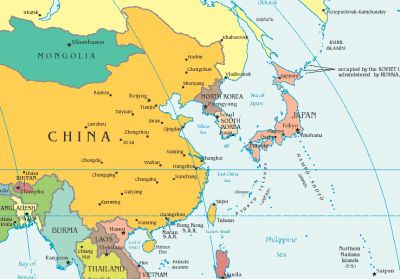




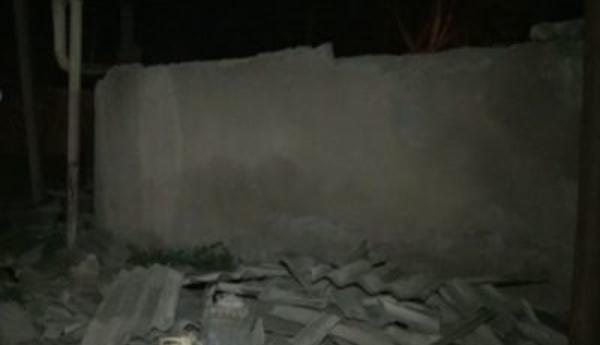

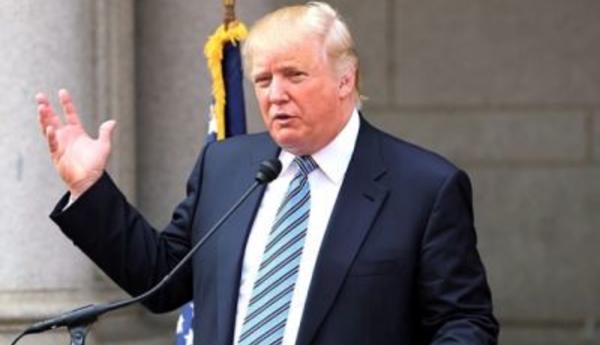
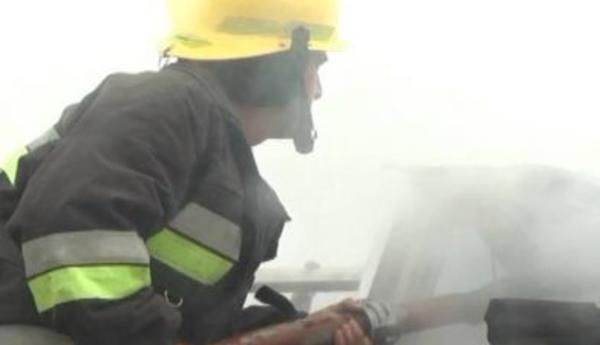



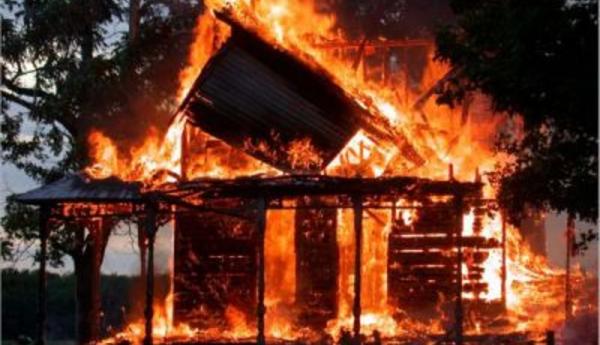



.jpg)
















